Basel, November 10, 2025 – Novartis, a leading global innovative medicines company, today announced the opening of a new 10,000-square-foot radioligand therapy (RLT) manufacturing facility in Carlsbad, California. This state-of-the-art site represents a key milestone in the company’s previously announced $23 billion investment in US infrastructure over the next five years.
The opening of the Carlsbad manufacturing facility allows Novartis to seamlessly meet future demand for RLT, adding additional capacity and augmenting the company’s world-class supply chain capabilities. The Carlsbad facility has been filed with the FDA as an additional US point of supply, and commercial manufacturing may begin once approval is granted.
RLTs are a form of precision medicine that combines a tumor-targeting molecule (ligand) with a therapeutic radioisotope, enabling the delivery of radiation to the tumor with the goal of limiting damage to the surrounding cells. Because each RLT dose is custom-made and time-sensitive, with a radioactive half-life measured in hours, proximity to treatment centers and transit hubs helps ensure patients receive their treatment when and where they need it.
“At Novartis, we tackle the toughest challenges in medicine by doing what’s never been done before for patients,” said Vas Narasimhan, CEO of Novartis. “Radioligand therapy is a breakthrough we’ve unlocked at scale, made possible by reimagining how innovation reaches patients. As the global leader in RLT for more than seven years, we’ve advanced this technology with a deep belief in its power to transform cancer care. The opening of our Carlsbad facility underscores our strong commitment to the US and dedication to bringing this pioneering treatment to patients across the country.”
Novartis is the only pharmaceutical company with a dedicated commercial RLT portfolio, and the Carlsbad facility is its third US RLT manufacturing site, reinforcing its global leadership in radioligand therapies with unmatched expertise in development, production, and delivery to patients worldwide. The Carlsbad facility is purpose-built to manufacture the company’s FDA-approved RLTs with capacity for future expansion.
“We commend Novartis for supporting our broader mission of bringing manufacturing capacity in the United States,” said FDA Commissioner Marty Makary, M.D., M.P.H.. “Our unique partnership approach is working.”
“Novartis is transforming the future of cancer care—and it's happening right here in Carlsbad,” said Carlsbad City Council Member Melanie Burkholder. “This new advanced RLT production facility is a major milestone for our region, strengthening California’s position as a hub for life sciences innovation. It will bring exciting new opportunities for our community, including more engineering and manufacturing jobs. I'm proud our local community will be part of the future of cancer care.”
In addition to the Carlsbad opening, Novartis has announced multiple construction initiatives and future plans in the US, including:
These investments, enabled by a pro-innovation policy and regulatory environment in the US, reflect Novartis' broad commitment to the market and building its infrastructure. Novartis expects to invest nearly $50 billion in its US operations over the next five years, including the $23 billion announced earlier this year, underscoring its long-term commitment to strengthening the US healthcare ecosystem.
Novartis and Radioligand Therapy (RLT)
Novartis is reimagining cancer care with RLT for patients with advanced cancers. By harnessing the power of targeted radiation and applying it to advanced cancers, RLT is designed to deliver treatment directly to target cells anywhere in the body3,4.
Novartis is actively investigating the application of RLTs across cancer types and settings, with one of the deepest and most advanced pipelines in the industry, with trials in prostate cancer, breast, colon, lung, brain, pancreatic and other cancers. Novartis has established global expertise, with specialized supply chain and manufacturing capabilities across its network of RLT production sites around the world.
Disclaimer
This press release contains forward-looking statements within the meaning of the United States Private Securities Litigation Reform Act of 1995. Forward-looking statements can generally be identified by words such as “potential,” “can,” “will,” “plan,” “may,” “could,” “would,” “expect,” “anticipate,” “look forward,” “believe,” “committed,” “investigational,” “pipeline,” “launch,” or similar terms, or by express or implied discussions regarding potential marketing approvals, new indications or labeling for the investigational or approved products described in this press release, or regarding potential future revenues from such products. You should not place undue reliance on these statements. Such forward-looking statements are based on our current beliefs and expectations regarding future events, and are subject to significant known and unknown risks and uncertainties. Should one or more of these risks or uncertainties materialize, or should underlying assumptions prove incorrect, actual results may vary materially from those set forth in the forward-looking statements. There can be no guarantee that the investigational or approved products described in this press release will be submitted or approved for sale or for any additional indications or labeling in any market, or at any particular time. Nor can there be any guarantee that such products will be commercially successful in the future. In particular, our expectations regarding such products could be affected by, among other things, the uncertainties inherent in research and development, including clinical trial results and additional analysis of existing clinical data; regulatory actions or delays or government regulation generally; global trends toward health care cost containment, including government, payor and general public pricing and reimbursement pressures and requirements for increased pricing transparency; our ability to obtain or maintain proprietary intellectual property protection; the particular prescribing preferences of physicians and patients; general political, economic and business conditions, including the effects of and efforts to mitigate pandemic diseases; safety, quality, data integrity or manufacturing issues; potential or actual data security and data privacy breaches, or disruptions of our information technology systems, and other risks and factors referred to in Novartis AG’s current Form 20-F on file with the US Securities and Exchange Commission. Novartis is providing the information in this press release as of this date and does not undertake any obligation to update any forward-looking statements contained in this press release as a result of new information, future events or otherwise.
About Novartis Novartis is an innovative medicines company. Every day, we work to reimagine medicine to improve and extend people’s lives so that patients, healthcare professionals and societies are empowered in the face of serious disease. Our medicines reach nearly 300 million people worldwide.
Reimagine medicine with us: Visit us at and connect with us on , , and .

 858-299-6900
858-299-6900




 Service Areas
Service Areas























